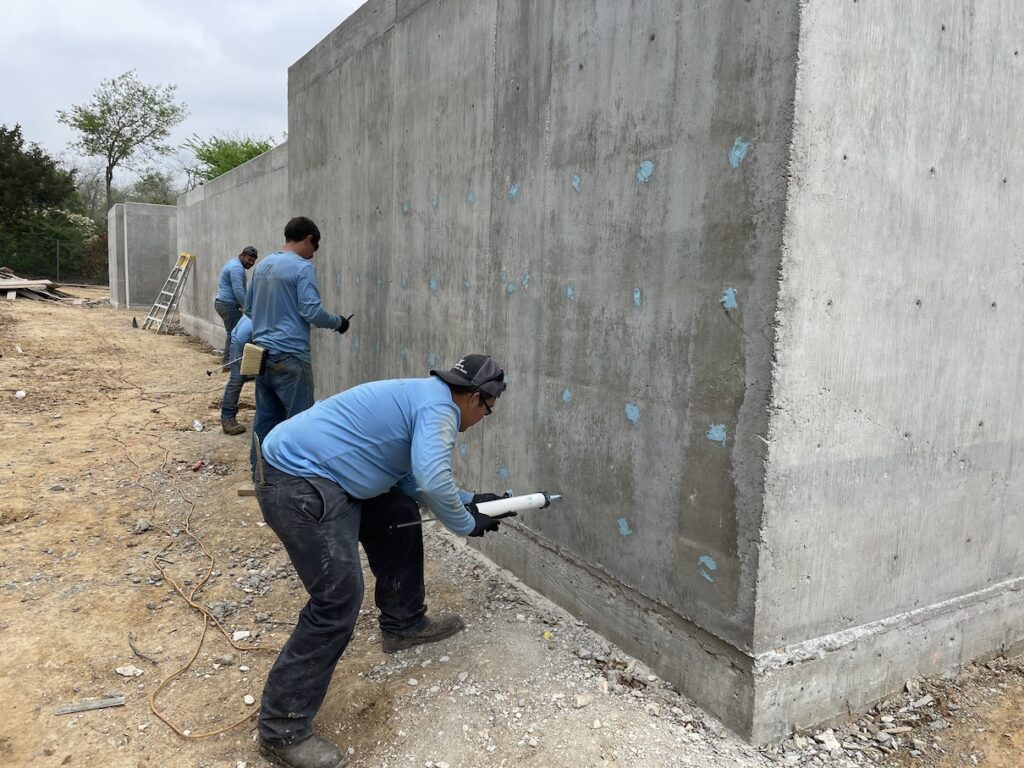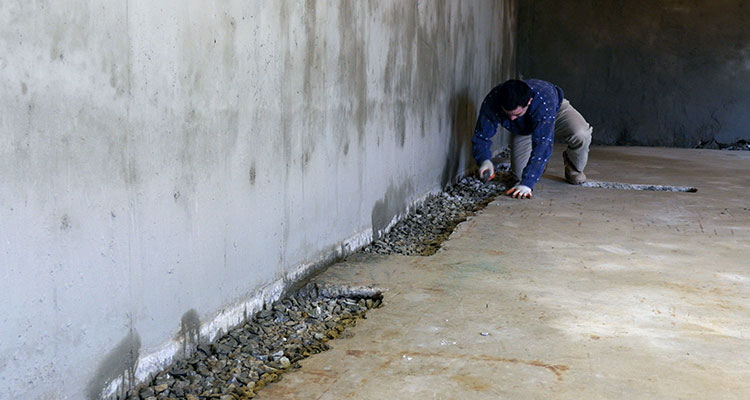The Basic Principles Of Basement Waterproofing Ames
The Basic Principles Of Basement Waterproofing Ames
Blog Article
See This Report about Basement Waterproofing Ames
Table of ContentsUnknown Facts About Basement Waterproofing AmesWhat Does Basement Waterproofing Ames Do?The Basic Principles Of Basement Waterproofing Ames How Basement Waterproofing Ames can Save You Time, Stress, and Money.The Facts About Basement Waterproofing Ames RevealedOur Basement Waterproofing Ames Diaries
Routinely examine your cellar for indicators of dampness, such as damp spots, mold and mildew, or musty odors. Make certain that seamless gutters and downspouts are clean and operating appropriately. Look for structure fractures and repair them as needed. Different periods present different difficulties. In springtime, melting snow and boosted rainfall can lead to water buildup.In winter season, freezing temperatures can cause foundation fractures to expand. Working with a specialist offers many advantages: Professionals have the competence to identify the origin causes of wetness troubles and offer reliable remedies.
With so much details out there, it's hard to know who to depend on - basement waterproofing ames. When you have actually obtained a basement waterproofing or mold problem, you want to obtain the right answers, fix the issue, and proceed with the things in your life that truly issue. Our resource facility gives genuine response to several of one of the most typical inquiries and experiences homeowners experience when thinking about cellar waterproofing

Basement Waterproofing Ames Fundamentals Explained
by Nick Gromicko, CMIBasements are normally the location of a framework most at risk for water damage since they lie below grade and bordered by dirt. Soil releases water it has taken in throughout rainfall or when snow thaws, and the water can end up in the basement through leaks or cracks.
Examiners can likewise gain from recognizing these fundamental approaches for stopping leakages and floodings. Protecting against water from getting in the basement by guaranteeing it is diverted away from the foundation is of primary issue. Poor roofing water drainage and surface runoff due to gutter problems and incorrect site grading may be one of the most typical sources of wet cellars.
Here are some measures to draw away water far from the foundation: Install and keep gutters and downspouts to ensure that they route all rainwater and snow thaw much enough away from the structure of the structure to guarantee that merging does not happen near the walls of the structure. At least 10 feet from the building is best, and at the point where water leaves the downspout, it should have the ability to stream easily away from the structure rather of back toward it, and need to not be gathering in swimming pools.
Low spots that might result in water pooling need to be evened out to stop the possibility of standing water near the foundation. Shallow ditches called swales need to be utilized in conditions where one or more sides of the building encounter an upward incline (basement waterproofing ames). A swale needs to slope far from the building for 10 to 15 feet, at which point it can empty right into one more swale that routes water around to the downhill-side of the structure, leading it away from the structure
Some Known Incorrect Statements About Basement Waterproofing Ames
Water pressure from the exterior might be constructing up, compeling water with walls. The home may have cleared up, causing fractures in the floor or walls.
Right here are some actions to take if you presume that water is going into the basement through cracks or holes: Recognize areas where water may be going into via cracks or openings by examining for moisture, leaking or staining. Every square inch of the cellar need to be taken a look at, especially in instances where leaking or flooding has actually not been noticeable, however wetness pop over here buildup is conveniently apparent.
This is a water-proof formula that can assist ensure that wetness and water do not permeate basement walls. It is effective mostly for extremely small splits and holes. Any fractures larger than around 1/8-inch should be loaded with mortar made from one component cement and 2 components fine sand, with just adequate water to make a relatively tight mortar.
Basement Waterproofing Ames for Beginners
Using a breaking sculpt and hammer or a cold sculpt, cut a dovetail groove along the mouth of each fracture to be filled, and afterwards apply the mortar extensively. The dovetail groove, when filled up, ought to be strong sufficient to resist the pressure of pressure that was pressing water via the fracture.
Inhalation can also create irritability to the breathing system. Sodium silicate must be used only to bare concrete, concrete block or official source masonry that has been cleansed extensively and is cost-free of any dirt, oil, adhesives, paint and grease.
Sodium silicate should not be over-applied or it will not be completely soaked up by the substrate, leaving a white residue. Paint can then be applied without anxiety of water vapor getting caught between the paint and the wall surface, which might at some point create blistering and peeling. Adhesives for ceramic tile or flooring can additionally be made use of better, once the substratum has actually been sealed.
The Basement Waterproofing Ames Statements
Having a home is a considerable investment, both economically and mentally.
Find out the fundamentals, benefits, and the detailed overview to make certain that your home stands high and solid for generations to find. Cellar waterproofing is a crucial yet typically neglected element of home maintenance. To comprehend why cellar waterproofing is needed, it is essential to comprehend the basic principles. Basements are the structure of your home, situated underground degree.
This can result in a wet, mildewy cellar, cause cracks in the walls or, in extreme situations, lead to flooding. Waterproofing, by definition, is making something untouched by water and impervious to it, which's exactly what basement waterproofing intends to achieve. The significance of this procedure is to establish a barrier to deal with the wetness that your cellar wall surfaces come in contact with, therefore protecting against any type of damage to the foundation and interior of your house.
The 20-Second Trick For Basement Waterproofing Ames

Report this page